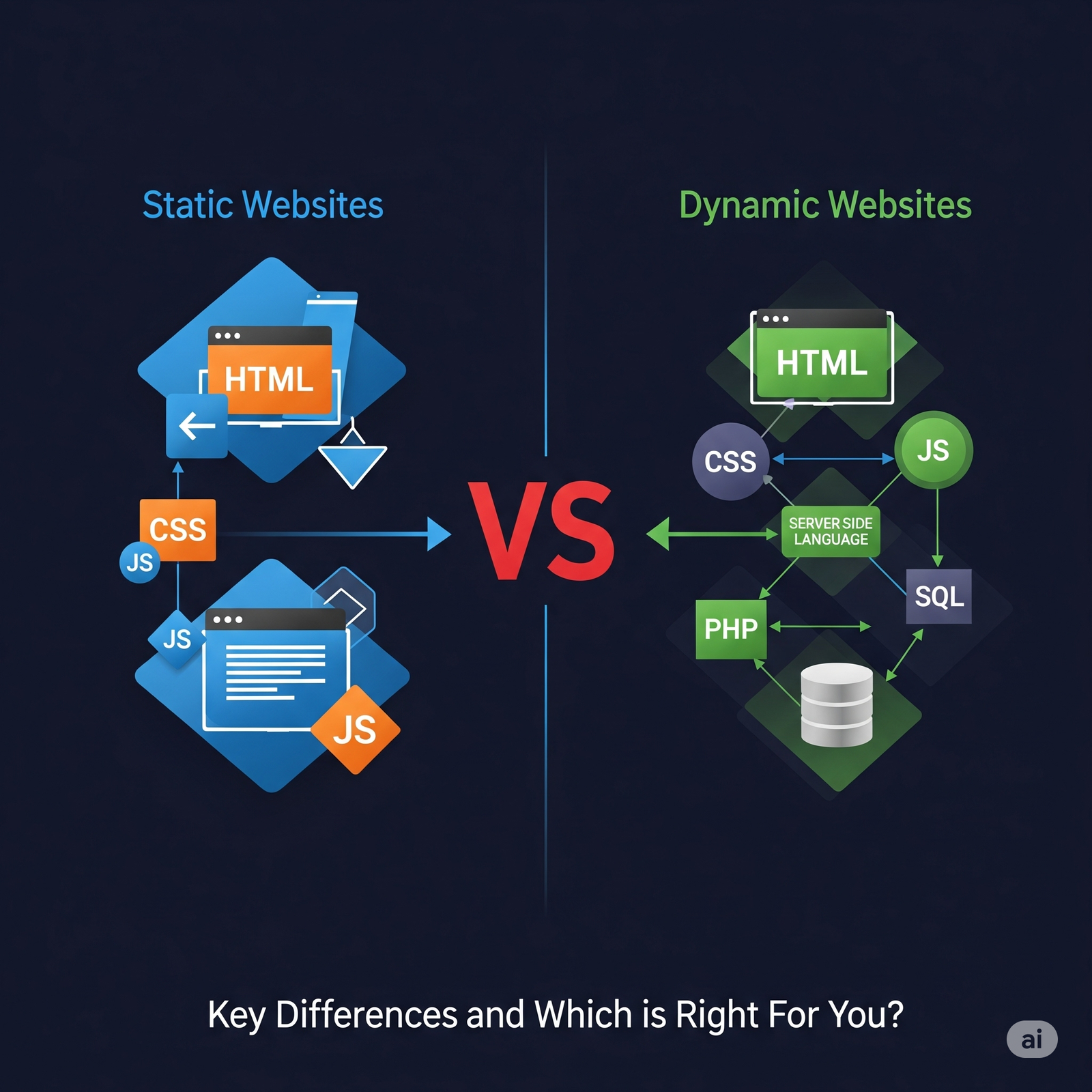
When you’re planning to create a website, one of the first decisions you’ll face is:
Should you go for a static website or a dynamic website?
Choosing between static vs dynamic website design depends on your goals, budget, and the features you want. In this blog, we’ll explain the difference between static and dynamic websites, their pros and cons, and help you decide which one is best for you.
 What is a Static Website?
What is a Static Website?
A static website is made up of fixed web pages with pre-written HTML, CSS, and JavaScript code. Each page is a separate file and does not change unless a developer manually updates it.
 Key Features of Static Websites:
Key Features of Static Websites:
- Fast loading speed
- Simple and easy to build
- Ideal for small websites (like portfolios or brochures)
 Examples of Static Websites:
Examples of Static Websites:
- Personal portfolio websites
- Company landing pages
- Product showcase pages
 What is a Dynamic Website?
What is a Dynamic Website?
A dynamic website shows different content to different users and updates automatically using server-side scripting like PHP, ASP.NET, or databases like MySQL.
 Key Features of Dynamic Websites:
Key Features of Dynamic Websites:
- Interactive and user-friendly
- Content changes without changing code
- Ideal for blogs, e-commerce sites, or social media platforms
 Examples of Dynamic Websites:
Examples of Dynamic Websites:
- News websites
- E-commerce stores (like Amazon)
- Social media platforms (like Facebook)
 Static vs Dynamic Website – Key Differences
Static vs Dynamic Website – Key Differences
| Feature | Static Website | Dynamic Website |
|---|---|---|
| Content | Fixed (manual changes needed) | Updates automatically from database |
| Speed | Very fast | Slightly slower (due to processing) |
| Development Cost | Low | Higher |
| Hosting Needs | Simple hosting | Needs server-side support |
| Best For | Small websites | Large, interactive websites |
 How to Choose Between Static and Dynamic Website Design
How to Choose Between Static and Dynamic Website Design
Here are some simple tips to help you decide:
 Choose a Static Website if:
Choose a Static Website if:
- You need a simple website with 3–10 pages.
- You want low cost and fast performance.
- You don’t plan to update content often.
 Choose a Dynamic Website if:
Choose a Dynamic Website if:
- You need features like login, search, comments, or shopping carts.
- You plan to update content frequently (like blogs or news).
- You want users to interact with your site.
 Conclusion
Conclusion
Both static and dynamic websites have their own advantages.
- Static sites are fast and simple, perfect for small projects.
- Dynamic sites are flexible and powerful, best for large and interactive platforms.
Choose what fits your business needs, budget, and long-term goals.
Need help deciding? A professional web designer can guide you to the right choice.
 Keywords:
Keywords:
- What is static website
- What is dynamic website
- Static vs dynamic website
- Difference between static and dynamic websites
- Which is better static or dynamic website
- Website design tips for beginners
